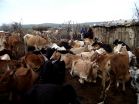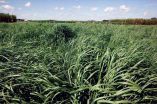(Press-News.org) People in a society are bound together by a set of connections - a social network. Cooperation between people in the network is essential for societies to prosper, and the question of what drives the emergence and sustainability of cooperation is a fundamental one.
What we know about other people in a network informs how much we are willing to cooperate with them. By conducting a series of online experiments, researchers explored how two key areas of network knowledge effect cooperation in decision-making: what we know about the reputation and social connections of those around us.
In most social contexts, knowledge about others' reputation - what we know about their previous actions - is limited to those we have immediate connections with: friends, neighbours and so on.
But the new study shows that if the reputation of everyone in a network is completely transparent - made common knowledge and visible to all - rather than limited to the individuals who are directly connected, the level of cooperation across the overall network almost doubles. The network also becomes denser and more clustered (so your connections tend to be connected with each other).
The researchers also tested how transparency of social connections in the group influences cooperation. On its own, common knowledge of social connections had little impact on overall levels of cooperation.
However, when the researchers combined transparency of social connections with transparency of everyone's reputation, a community of the most cooperative formed. Members of the community actively removed links from less cooperative individuals and refused their proposals to reconnect.
Researchers found that belonging to the community of cooperators is profitable. Each interaction in the cooperative community is 23% more beneficial than the equivalent interaction in the less cooperative community.
The study is published today in the journal PNAS, and was conducted by Cambridge and Oxford researchers.
"We show that knowing others' past actions is the key driver of a high contribution level. Additionally, knowing who is connected to whom matters for the distribution of contributions: it allows contributors to form their own community," said study author Dr Edoardo Gallo, from the Faculty of Economics and Queens' College at the University of Cambridge.
"This finding suggests that in a world where social information is more available, people may increasingly insulate themselves in communities with other like-minded individuals. In the case we examined, belonging to the community of contributors is highly beneficial," he said.
The research sheds light on the problem of 'public good' provision: what motivates people to make costly actions towards a good that benefits everyone, even those who do not contribute to it. Perhaps the most defining example of 'public good' in the modern era is the preservation of our environment.
Gallo, along with Oxford colleague Chang Yan, devised an online experiment involving people forming connections and playing a 'game' of public good provision, also popularly known as the Prisoner's Dilemma.
First, the participants in a group can freely form connections with each other which determine the network. After the network is formed, each individual decides whether to cooperate by contributing to a public good that only benefits their neighbours in the network.
Contributing benefits all the neighbours, but it is costly to the contributor. Not cooperating by not contributing, however, is costless.
The best possible outcome for the group is for everyone to contribute. However, each individual has an incentive not to contribute: they can gain the benefits from others' contributions without paying any cost themselves.
The researchers recruited 364 people from crowdsourcing platform Amazon Mechanical Turk to play several rounds of a network formation game followed by a public good game. They investigated four treatments that varied the amount of knowledge subjects have about the network and previous actions of others.
When the reputation (previous actions) of everyone in the network was rendered transparent, the overall levels of cooperation were almost twice as high as when only the previous actions of immediate connections were known.
When the social connections for the entire network were also revealed to all, the cooperators formed their own community, leaving those with a history of being uncooperative out in the cold.
Gallo points out that whether the community formation - the insulating and ostracizing - that occurred in the transparent network is a desirable outcome depends on the nature of the behaviour that leads to the separation.
"In the experiment, the 'good' cooperators ostracize the 'bad' defectors, but one can argue the defectors brought it on themselves with their actions. If the same pattern occurred because of another more neutral behaviour, like an accent when speaking a language, then the ostracization might be undesirable for society," Gallo said.
INFORMATION:
A new study suggests that increases in atmospheric CO2 could intensify extreme droughts in tropical and subtropical regions -- such as Australia, the southwest and central United States, and southern Amazonia -- at much a faster rate than previously anticipated, explains University of Texas at Austin professor Rong Fu in a commentary in the March 9 edition of Proceedings of the National Academy of Sciences.
Fu, a professor at the university's Jackson School of Geosciences, writes about a new study by William K.M. Lau of the University of Maryland and Kyu-Myong Kim of the ...
Once green, the Sahara expanded 5,500 years ago, leading ancient herders to follow the rain and grasslands south to eastern Africa. But about 2,000 years ago, their southward migration stalled out, stopped in its tracks, archaeologists presumed, by tsetse-infested bush and disease.
As the theory goes, the tiny tsetse fly altered the course of history, stopping the spread of domesticated animal herding with a bite that carries sleeping sickness and nagana, diseases often fatal for the herder and the herded.
Now, isotopic research on animal remains from a nearly 2,000-year-old ...
Despite extensive historical knowledge about the African slave trade - including trends in the volume and demographics of the roughly 12 million people shipped from West and West Central Africa to the New World between 1500 and 1850 - fundamental details about their ethnic and geographical origins remain elusive. Dr. Hannes Schroeder from the Centre for GeoGenetics at the Natural History Museum, University of Copenhagen, who led the study, explains:
- There are historical records - merchant ledgers, shipping records and the like - but they tend to refer to coastal shipping ...
In the ongoing Ebola outbreak in West Africa, whose death toll is approaching 10,000, little information has been available about how the human immune response unfolds after infection.
Researchers from Emory and the Centers for Disease Control and Prevention have now obtained a first look at the immune responses in four Ebola virus disease survivors who received care at Emory University Hospital in 2014, by closely examining their T cells and B cells during the acute phase of the disease. The findings reveal surprisingly high levels of immune activation, and have implications ...
March 9, 2015
PITTSBURGH--To fully understand how nanomaterials behave, one must also understand the atomic-scale deformation mechanisms that determine their structure and, therefore, their strength and function.
Researchers at the University of Pittsburgh, Drexel University, and Georgia Tech have engineered a new way to observe and study these mechanisms and, in doing so, have revealed an interesting phenomenon in a well-known material, tungsten. The group is the first to observe atomic-level deformation twinning in body-centered cubic (BCC) tungsten nanocrystals. ...
COLUMBUS, Ohio - Children whose parents think they're God's gift to the world do tend to outshine their peers - in narcissism.
In a study that aimed to find the origins of narcissism, researchers surveyed parents and their children four times over one-and-a-half years to see if they could identify which factors led children to have inflated views of themselves.
Results showed that parents who "overvalued" their children when the study began ended up with children who scored higher on tests of narcissism later on.
Overvalued children were described by their parents ...
A new study of Tourette syndrome (TS) led by researchers from UC San Francisco and Massachusetts General Hospital (MGH) has found that nearly 86 percent of patients who seek treatment for TS will be diagnosed with a second psychiatric disorder during their lifetimes, and that nearly 58 percent will receive two or more such diagnoses.
It has long been known that TS, which emerges in childhood and is characterized by troublesome motor and vocal tics, is often accompanied by other disorders, especially attention-deficit hyperactivity disorder (ADHD) and obsessive-compulsive ...
If advanced biofuels are to replace gasoline, diesel and jet fuel on a gallon-for-gallon basis at competitive pricing, we're going to need a new generation of fuel crops - plants designed specifically to serve as feedstocks for fuels. Researchers with the U.S. Department of Energy (DOE)'s Joint BioEnergy Institute (JBEI) have demonstrated the power of a new ally in this effort - proteomics!
In a study led by Benjamin Schwessinger, a grass geneticist with JBEI's Feedstocks Division, researchers used advanced proteomic techniques to identify 1,750 unique proteins in shoots ...
DURHAM, N.C. -- The discovery of the "exercise hormone" irisin three years ago and more than 170 related papers about it since have been called into question by recent research showing they were based on flawed testing kits.
Previous studies suggested that the hormone irisin -- named for the Greek messenger goddess Iris -- travels from muscle to fat tissue after exercise to tell fat cells to start burning energy instead of storing it. The finding ignited hope and press coverage that irisin could hold the key to fighting diabetes and obesity, perhaps one day taking the ...
In a study that helps to deconstruct how olfaction is encoded in the brain, neuroscientists at University of California, San Diego School of Medicine have identified a type of neuron that appears to help tune, amplify and dampen neuronal responses to chemosensory inputs from the nasal cavity.
The study, published March 9 in Nature Neuroscience, has applications to understanding the root cause of epileptic seizures, which are frequently centered in the olfactory cortex, the part of the brain that processes the sense of smell.
"Our sense of smell is complex and involves ...

